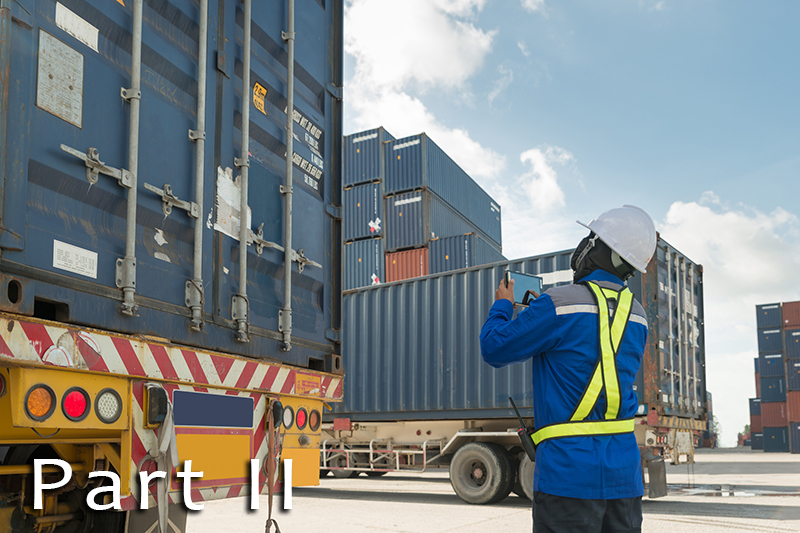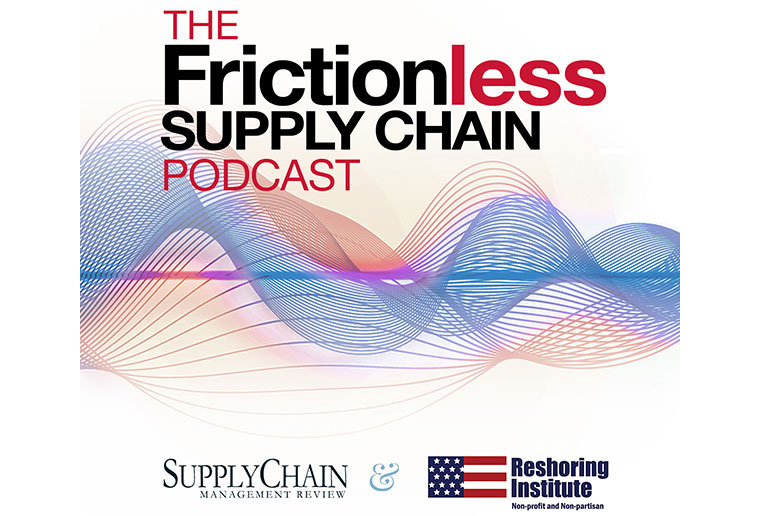 Editor's Note: With more than 20 years of experience, Tom Gould leads Flexport's trade advisory services. Before working for the the digital freight forwarder, Flexport, he was Sr. Director, Customs and International Trade for Sandler, Travis & Rosenberg, P.A. He is a member of the U.S. Customs and Border Protection's Trade Support Network, and served on the board of the Foreign Trade Association.
Editor's Note: With more than 20 years of experience, Tom Gould leads Flexport's trade advisory services. Before working for the the digital freight forwarder, Flexport, he was Sr. Director, Customs and International Trade for Sandler, Travis & Rosenberg, P.A. He is a member of the U.S. Customs and Border Protection's Trade Support Network, and served on the board of the Foreign Trade Association.
In this exclusive two-part interview, he explains how supply chain managers may better address the complexity of global regulatory compliance.
Check out Part I of this exclusive interview with Flexport
SCMR:Can you explain how classification of items subject to the tariffs can be carefully analyzed if legacy systems are outdated?
Gould: Well the first problem is if you're still using a legacy system! If you have an outdated system, you can't do what's necessary to identify what you'll owe and the potential opportunities for savings. You simply can't operate within a spreadsheet and expect to find new opportunities for savings.
Spreadsheets provide you with a very narrow scope to manage the impact of tariffs on your products. Let's say you have all of your HTS codes for each of your products listed in a spreadsheet. That would allow you to do a VLOOKUP, or to identify a list of all of the exclusions or to determine which products will be affected by tariffs.
That doesn't allow you to project the impact of tariffs, which is critical in understanding the larger impact. With a sophisticated system, instead of simply matching your products to HTS codes, you could look at projected tariffs over time per country that would then allow you to identify the issues and costs of each tariff.
SCMR: How do you help shippers review contracts and costs of their supply chains, since domestic shippers may have the cost of tariffs passed via suppliers without being made aware?
Gould: One of the most important aspects of customs compliance is properly reporting the value of your products. But customs value, like income, is a nuanced issue. Historically, most products have had low duty rates, meaning shippers weren't compelled to minimize reportable value to customs, but instead, focused on minimizing reportable income.
With the U.S.-China trade war really slamming shippers, the historical focus on income versus customs value is hurting their wallets. For example, it makes it harder for companies to effectively use common tactics such as transfer pricing that help to lower overall government spend (taxes and duties).
Transfer pricing allows companies with an arm in one country to agree on the value and price of a product with another arm in another country. When a transfer pricing strategy only takes income into account, companies may inadvertently increase their customs value.
Multinational global companies determine their transfer pricing with the goal of minimizing income for tax purposes. To do this they typically increase the cost of their products. When duty rates were low or zero, increasing the cost of products didn't result in significantly more duty payments. But with the new duty rates, higher cost products lead to larger duty payments. Companies looking to lower their overall government spend should consider their transfer pricing strategy to focus on customs value.
SCMR: What advice do you have for international shippers when reviewing Deliver Duty Paid (DDP) contracts to plan for possible tariff impacts in 2020. Any “fundamentals” to keep in mind?
Gould: DDP contracts become more interesting when you're dealing with higher duty rates. This means that you're pushing some of the responsibility and burden to the suppliers.
The issue is that CBP often flags imports from DDP companies as they're at a higher risk of undervaluing their products.
For example, if your supplier in China comes to you with a DDP contract, the supplier will be the importer, responsible for customs classification, value reporting and duty payment. But your brand is still on the products.
DDP transactions can trigger CBP to open a review or investigation into your shipments, which means they may physically open and inspect your cargo. When they open the box they'll see that another Chinese company has imported the goods with your branding. If the supplier made any errors on their declarations, customs can tie those errors to your brand.
SCMR: How can shippers ensure that the correct Customs bond in place?
Gould: This has become a big issue. The recent changes to duty rates are requiring companies to increase their bond amounts, but without an understanding of how bond amounts are calculated, companies are not ensuring the right bond is in place.
The bond amount is based on duty, fees and taxes projected over the next 12 months. The issue is that most companies look to the duties paid over the past 12 months and underestimate their required bond for the next 12 months. CBP can only look at the past 12 months so their notices don't accurately project required bond amounts. Even if they could see further back, the state of trade is in such flux that the past is no longer a good indicator of what's on the horizon.
If future duty payments are not projected properly, companies may be forced to buy multiple new bonds as their duty amounts increase. As bond amounts go up the sureties (or guarantors) that issue the bonds may require collateral in order to issue bonds, adding additional cost and time and potentially delaying shipments.
SCMR: What is the current status of USMCA? Brexit? U.S.-China trade? With all these trade agreements unresolved at the moment, how should shippers prepare for changes in regulations?
Gould: The status is that none of us know what's going to happen. And so my best advice is to be extremely diligent about your own supply chain. Diversify, make sure you're sourcing from other countries and that you have the right partners. From there, be nimble and make sure you have the right systems in place so you can operate on the fly.
SC
MR


Latest Supply Chain News
- Tips for CIOs to overcome technology talent acquisition troubles
- There is still work to do to achieve supply chain stability
- Blooming success: The vital role of S&OE in nurturing global supply chains
- Supply chain salaries, job satisfaction on the rise
- How one small part held up shipments of thousands of autos
- More News
Latest Podcast

 Explore
Explore
Business Management News
- Tips for CIOs to overcome technology talent acquisition troubles
- There is still work to do to achieve supply chain stability
- Blooming success: The vital role of S&OE in nurturing global supply chains
- Supply chain salaries, job satisfaction on the rise
- How one small part held up shipments of thousands of autos
- Investor expectations influencing supply chain decision-making
- More Business Management
Latest Business Management Resources

Subscribe

Supply Chain Management Review delivers the best industry content.

Editors’ Picks





